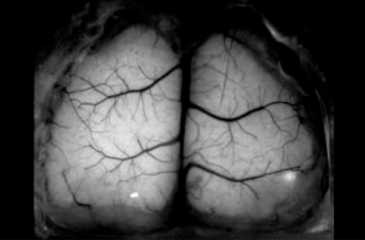Researchers from both the University of Minnesota Medical School and College of Science and Engineering have created an innovative transparent 3D-printed skull implant that allows researchers to view brain activity in real time.
The implant, called See-Shell, is created by digitally scanning the surface of the skull. A 3D printer then prints an identical copy. Once complete, surgeons remove part of the skull and replace it with the transparent implant.
Researchers hope the new implant can provide new insights for a variety of brain conditions, including concussions, Parkinson’s Disease and Alzheimer’s.
“These are studies we couldn’t do in humans, but they are extremely important in our understanding of how the brain works so we can improve treatments for people who experience brain injuries or diseases,” said Timothy Ebner, Department Head, Department of Neuroscience.
The See-Shell research was funded primarily through the National Institutes of Health with additional support from the State of Minnesota.



